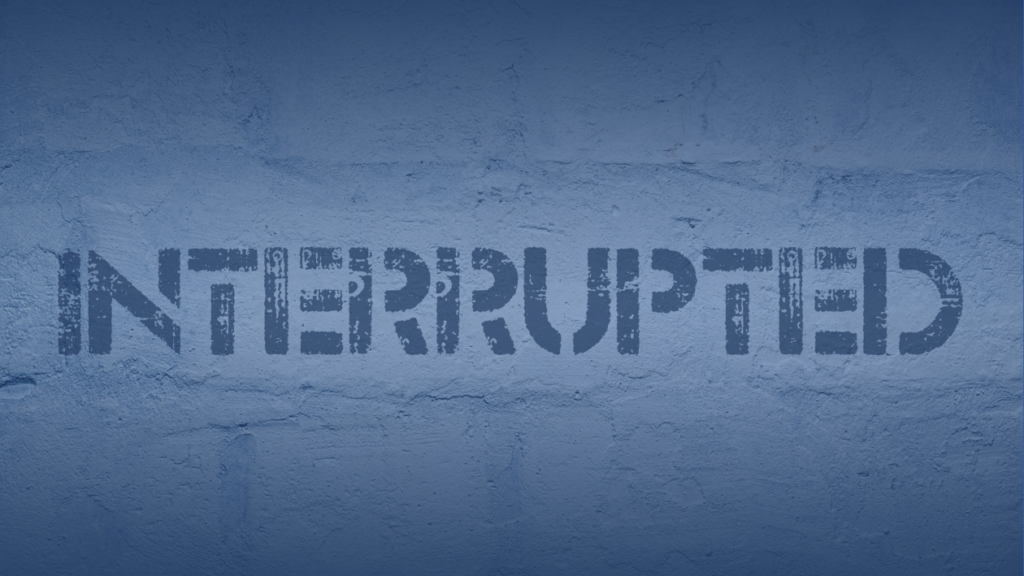Conversations are an essential part of our daily lives, and they play a crucial role in building and maintaining relationships. However, sometimes conversations can become stagnant, and the flow can be interrupted by patterns of behavior that prevent open and honest communication.
Whether it’s the tendency to interrupt, dominate the conversation, or avoid certain topics, these patterns of behavior can create barriers to effective communication.

The Case Study: Setting the Stage
In this story, the leader of an organization recognizes that the current approach to a reorganization is not working and is causing resistance and opposition among his team. He decides to try something different and interrupts the pattern by taking a break and listening to the team’s concerns.
This shift in approach leads to a more productive conversation and a greater willingness among the team to engage in co-creating solutions to their challenges. The leader’s actions demonstrate the power of suspending one’s own point of view and actively listening to others in order to create the conditions for change to occur.
The Story Starts Here: Leading a Reorganization
There once was a leader who was leading a re-org in his organization. He had been working with me for a while as part of the organization’s transformation process because he recognized that there were a lot of entrenched behaviors — including his own — that needed to shift if the re-org was going to be successful.
Then, one day, he was in a meeting that was going in the exact same direction as meetings had been going for weeks: it was heated and he was on the defense team. He was caught in a familiar pattern of explaining, justifying, and trying to convince others of his perspective and help them to see his viewpoint of why the reorganization was needed.
Recognizing a Pattern of Behavior
But on this day, in the heat of the moment, he had a moment of noticing. First, he noticed that he was in a familiar pattern. Then he noticed that the pattern was him digging in his heels, defending his point of view, and getting into a heated debate with his team.
This was his aha! moment.
He then decided to move through the steps of the “pattern interrupt” he’d been practicing with me in coaching sessions.
First, he called for a brief break and he got up and took a walk around the building. Then, when they reconvened, he sat down and acknowledged that he was defending what he believed to be right. And then he voiced his decision to shift into the mode of curiosity.
He shared with the team that he was going to listen. He was actually going to pause his active participation in the meeting so that he could really listen to what they were saying.
He moved to the back of the room, and he asked them to resume the conversation they were having previously about their concerns. The team began to talk with one another again, sharing the risk they saw, the personal impact this org change would have, and the individual fears that everyone shared. They also talked about the deep pain and frustration they had been experiencing because they felt like none of their concerns had been heard even after multiple weeks of trying to share them.
The Power of Pausing and Listening to Interrupt a Pattern of Behavior
After 45 minutes of listening, the leader re-joined the conversation and shared what he had heard. For him, it had been deeply moving and it radically shifted his understanding of what was happening to them. They weren’t just resisting his viewpoint, they were feeling totally unheard in their viewpoint. So, he apologized for the impact he had been having on the team, acknowledged the hurt and pain, and shared how he totally saw what they were seeing now.
When he finished sharing his experience of listening to them – one by one each leader leaned into the conversation and said ‘I’m in, let’s do this…’
A Defining Moment of Leadership
The executive would later share with me that it was the most profound moment of his leadership and that he didn’t really understand what he had done.
Here’s what I told him happened. You suspended your point of view long enough to hear their perspective and experience. By doing this, you brought the real conversation in the room – it actually wasn’t an opposition to the re-org as much as it was opposition to not having their concerns addressed.
By the leader’s action, people felt seen and heard, and were ready to engage in co-creating solutions to some of their challenges instead of resisting and blocking the change.
Creating Space for Change to Occur
This is the power of the conversation. It had created the space for change to occur, it helped people feel seen and heard so that they could buy-in to the change.
There had been a pattern established by the leader resisting their perspectives. He was advocating rather than inquiring — defending rather than suspending. As a result, the concerns of the group continued to persist in the form of roadblocks and opposition. And what you resist ALWAYS persists.
Once this leader had shifted the course of the conversation by starting to inquire more, when he recognized that it was time to stop resisting, …something new happened.
By creating the conditions for change to really happen, he was able to lead the change within his organization in a radically different and more effective way.
When You Are Stuck, Try Interrupting Your Pattern of Behavior!
Interrupting patterns of behavior is a powerful tool for improving the flow of conversation and enhancing the overall quality of our interactions with others.
Next time you find yourself stuck in a conversation or relationship that is not flowing well, try interrupting your pattern of behavior.
This can be as simple as taking a pause by stepping away, changing the subject, or listening more actively. By interrupting these patterns, we can create new opportunities for growth and connection with others.
Remember, effective communication is not about being perfect, it’s about being open and willing to make changes when necessary.
